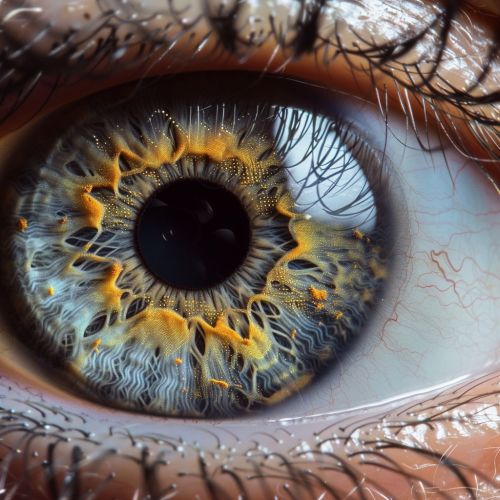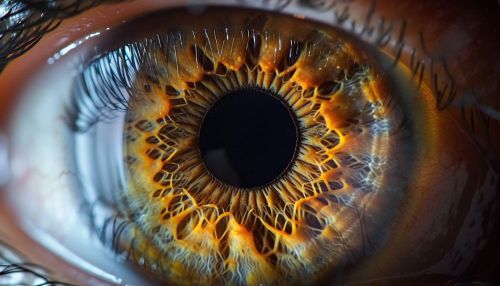Eye Camera
Introduction
The Eye Camera is a concept that merges the biological structure of the human eye with the technological aspects of a camera. It is a theoretical device that would allow for the capturing of images in a similar manner to how the human eye perceives visual stimuli. This concept is a significant topic in the fields of Biomedical Engineering, Optics, and Artificial Intelligence.
Anatomy of the Eye
The human eye is a complex organ that allows us to perceive our surroundings in detail and color. It is composed of several key components, each with a unique function that contributes to our overall visual perception.
Cornea
The Cornea is the transparent front part of the eye that covers the iris, pupil, and anterior chamber. It refracts, or bends, light that enters the eye onto the lens.
Lens
The Lens is a transparent, flexible structure that can change shape to focus light or an image onto the retina. This process is known as accommodation.
Retina
The Retina is a thin layer of tissue located at the back of the eye. It contains millions of photoreceptor cells that convert light rays into electrical signals. These signals are then sent to the brain through the optic nerve.
Camera Mechanics
A camera is an optical instrument used to capture images. Like the human eye, it has several components that work together to form an image.
Aperture
The Aperture is the opening in a camera lens through which light travels. It can be adjusted to control the amount of light that reaches the camera's sensor.
Shutter Speed
Shutter Speed determines the length of time the camera's sensor is exposed to light. It can be adjusted to control the brightness of the photo and to create effects related to motion.
Image Sensor
The Image Sensor is a device that converts an optical image into an electronic signal. It is essentially the digital equivalent of the retina in the human eye.
The Eye as a Camera
The concept of the eye as a camera is not new. In fact, the human eye has often been compared to a camera in terms of its function and structure.


Similarities
Both the eye and the camera capture light and focus it to create an image. The cornea and lens in the eye function similarly to the camera's lens, while the retina is analogous to the image sensor in a camera.
Differences
Despite these similarities, there are also key differences between the eye and a camera. For example, the eye has a much wider field of view and can process images more quickly than a camera. Additionally, the human brain plays a crucial role in interpreting the images captured by the eye, a process that is not replicated in a camera.
Eye Camera: Merging Biology and Technology
The concept of an eye camera involves integrating the biological functions of the eye with the technological capabilities of a camera. This could potentially allow for a device that captures images in a manner similar to human vision.
Potential Applications
An eye camera could have numerous applications, particularly in the fields of medicine and technology. For example, it could be used in the development of advanced prosthetic eyes or in the creation of more realistic virtual reality experiences.
Challenges and Considerations
However, the development of an eye camera also presents several challenges. These include replicating the complex functions of the eye, integrating biological and technological components, and addressing ethical considerations related to the use of such a device.
